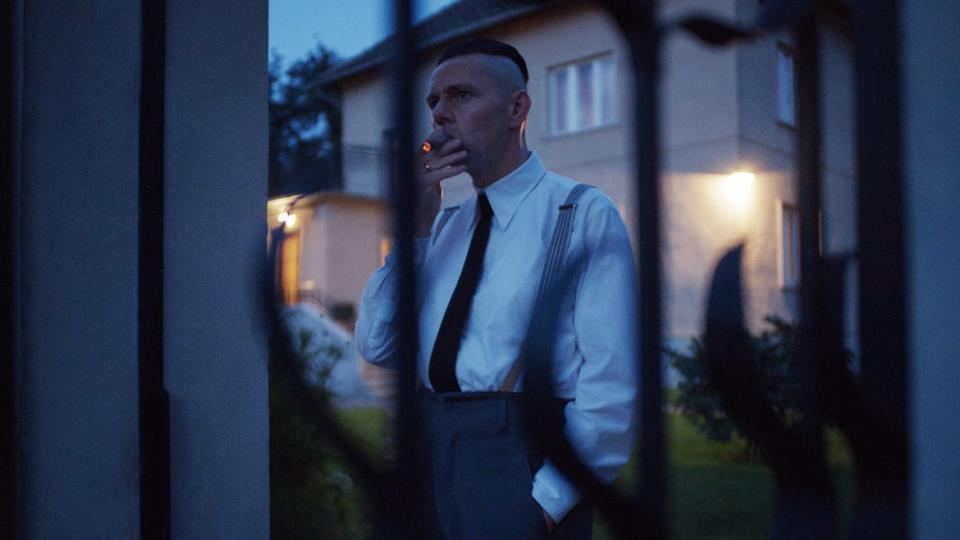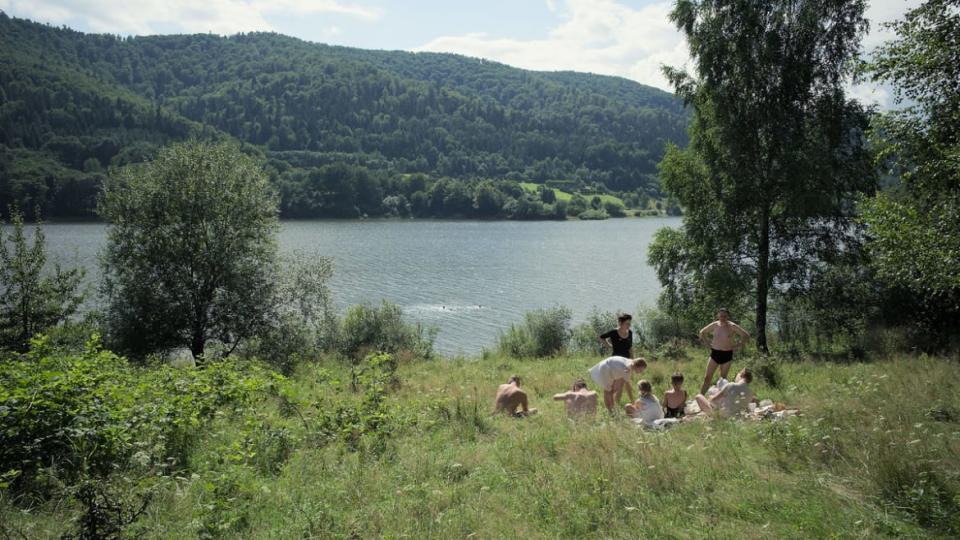‘Zone of Interest’ Is a Horrifyingly Brilliant Holocaust Drama

A Holocaust drama like no other, The Zone of Interest is perhaps the most chillingly detached film in cinema history. Writer/director Jonathan Glazer’s long-awaited follow-up to 2013’s Under the Skin is a tale of terrifying apathy told from an icy remove, such that distance—between us and what’s on screen; between its characters’ daily lives and what’s taking place right next door; and between humanity and inhumanity—proves both central to its m.o. as well as its primary subject. It’s a WWII horror story rooted in separation, alienation and a cold indifference that shakes one to the very core.
A loose adaptation of Martin Amis’ 2014 novel of the same name, The Zone of Interest (showing at this year’s New York Film Festival) is the cinematic embodiment of Hannah Arendt’s “banality of evil,” detailing the everyday affairs of Auschwitz concentration camp commandant Rudolf Höss (Christian Friedel), his wife Hedwig (Anatomy of a Fall’s Sandra Hüller), and their bustling brood, all of whom reside in a prim and proper abode located directly on the other side of the infamous death house’s wall. Theirs is a placid life filled with birthday celebrations for Rudolf, get-togethers between Hedwig and other Nazi wives, and children playing in an expansive yard marked by a large greenhouse and a swimming pool with a slide. When Hedwig’s mother visits the clan, she’s naturally impressed by the fruits of their success, evidence of which is everywhere, from their fine drinkware and handsome bedrooms to their doting servants.
What’s also apparent from the outset of The Zone of Interest is that the Höss family exists under the literal shadow of Auschwitz’s dormitories, crematoriums and attendant smokestacks, from which fire and smoke constantly emanate. Glazer shoots his material with deep-focus flatness, the result being a visual dullness that keeps the action at arms’ length, as if viewed through a microscope (or from the heavens). The director makes sure the Hösses are close enough to be studied but he refuses to empathetically engage with them; his compositions habitually foreground bland negative space and situate his characters deep and small in the frame. Disconnection is omnipresent and oppressive, creating a figurative chasm that’s at once unnerving and, in a certain sense, reassuring, given that, while the Höss’ pitiless behavior may be fascinating, it’s best spied from a ways away.
Glazer’s formal detachment echoes the Hösses’ own attitude toward the extermination camp looming over their every waking and slumbering moment. In scene after scene, The Zone of Interest’s characters blithely ignore what’s on their doorstep, and the director underscores their disengagement by habitually setting everyday household encounters and incidents to the background screams of Jewish prisoners, gunfire of Nazi soldiers, and barking tirades of guard dogs. The unthinkable atrocities occurring at Auschwitz are heard but never depicted in Glazer’s film, and that goes for Jews too, who make only brief on-screen appearances, the better to highlight the Hösses’ blasé disinterest in seeing them as real, present people who deserve consideration, compassion and mercy.

The Zone of Interest rarely has the Hösses address the genocide that Rudolf is carrying out; instead, Hedwig expresses her desire for another Italian spa vacation, she and Rudolf fret about a promotion that will take him away from Auschwitz (which he’s lionized for having built into a preeminent killing machine), and their son makes out with a girl on a clandestine wood pile. Nonetheless, they’re not ignorant about what’s going on—just completely and utterly unmoved by it. At night, their eldest boy plays by flashlight with his collection of teeth. Hedwig models a fur coat that’s arrived along with other dead prisoners’ belongings, finds a tube of lipstick in its pocket, and tries it out. And Rudolf chats with engineers about designs for a new “ring crematorium” that will afford non-stop homicides, and later meets with other commandants to discuss the complex logistics of completing the Führer’s Final Solution (a conversation in which the word “yields” is a euphemism for the unspeakable).
Glazer captures the underlying mundanity of the Holocaust’s orchestration, all bureaucratic arrangements and domestic routines, and the repetitiveness of his script is central to its purpose. The Zone of Interest incessantly hammers home its point until its quiet reserve elicits, in viewers, an inner howl of rage and madness. On three distinct occasions, the film cuts suddenly to a black-and-white negative-exposure view of a young Jewish girl surreptitiously hiding fruit for camp prisoners, and the interludes play as dark, unreal inversions of the Hösses’ broad-daylight lives. Even then, however, a fundamental divide remains, with the director casting such fleeting acts of rebellion as inherently isolated.
A New Holocaust Film Masterpiece Just Debuted at Cannes
Melding form and content down to the bone, Glazer creates an overarching portrait of disassociation that extends to the Holocaust itself, whose nightmares are reduced to so much air pollution, invisibly coating (and corrupting) everything. Friedel’s inexpressive countenance is of an essential piece with the eerily tranquil film, as is Mica Levi’s tremendous score, which balances lovely piano and orchestral arrangements with loud, moaning tones that sound like the bellows of Hell itself. The Zone of Interest is alive and yet Glazer simultaneously makes it feel as if it’s trapped beneath glass. Be it Rudolf smoking at night by his pool as the crematoriums rage, or Hedwig threatening a servant with incineration for a perceived slight, the ghastliness dwells on the edges of the lovely, manicured proceedings, as well as dead center too, albeit masked by a veneer of dainty decorum.
On the surface, Glazer treats his Nazis with a remoteness that resembles the Nazis’ own treatment of the Jews. Nonetheless, unlike Rudolf, Hedwig and their children (and the millions of WWII Germans like them), the auteur’s detachment is fueled by fury, outrage and a compulsive desire to gaze into (and, possibly, to comprehend) the bottomless void at the heart of the Holocaust.

Via the sight of Rudolf instinctively gagging and dry heaving in an empty staircase, The Zone of Interest climactically channels Joshua Oppenheimer’s peerless 2012 documentary The Act of Killing, implying that no barbaric evil can remain forever suppressed—a notion reinforced by Glazer cutting to modern-day visions of staffers cleaning the Auschwitz memorial museum, vacuuming and wiping down the displays of prisoners’ shoes and pictures. Those modern images are also of horrors encased behind glass, and suggest, ultimately, that there’s no experiencing, understanding, coping or connecting with Hitler’s genocide except from across a terrible abyss.
Liked this review? Sign up to get our weekly See Skip newsletter every Tuesday and find out what new shows and movies are worth watching, and which aren’t.
Get the Daily Beast's biggest scoops and scandals delivered right to your inbox. Sign up now.
Stay informed and gain unlimited access to the Daily Beast's unmatched reporting. Subscribe now.

 Yahoo News
Yahoo News 
